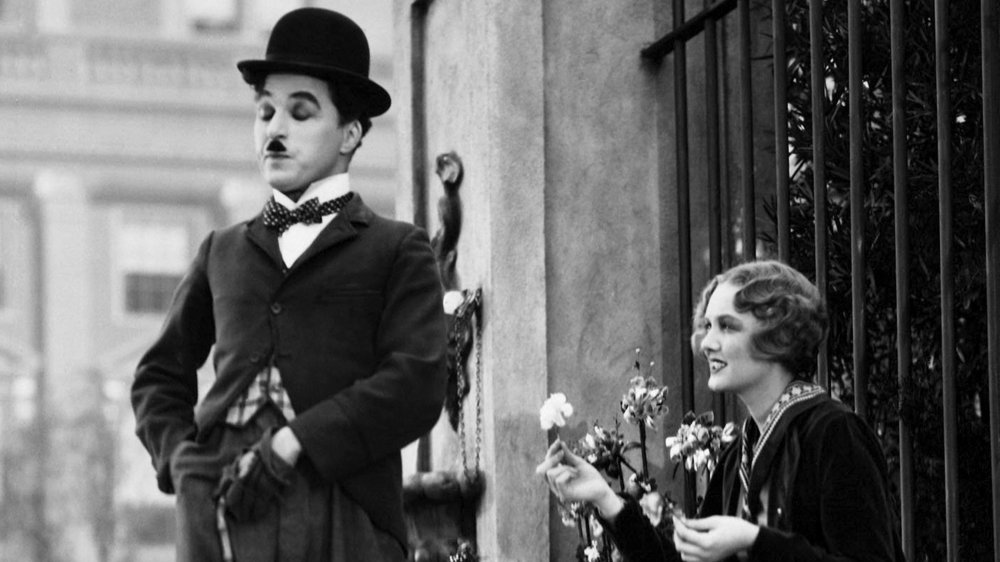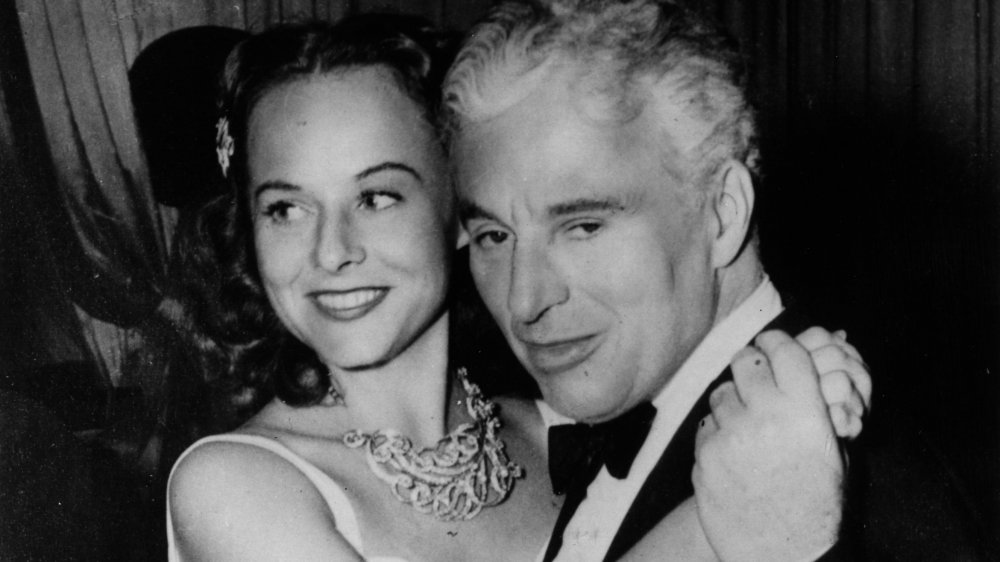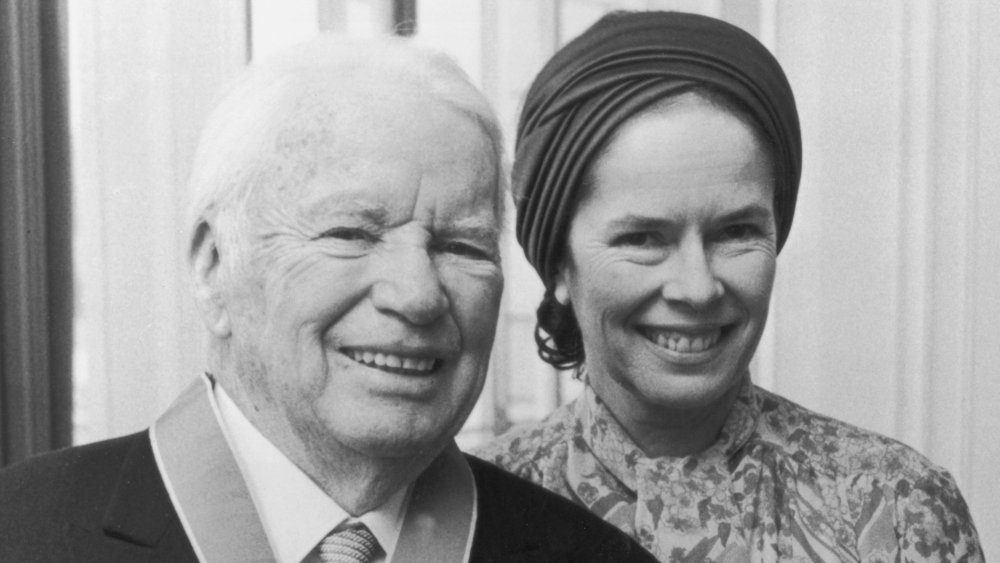The Dark Side Of Charlie Chaplin
When Charles Spencer Chaplin died in 1977 at the age of 88, Variety repeated a quote from critic Alexander Woolcott: "It must be said of Chaplin that he has created only one character, but that one, in his matchless courtesy, in his unfailing gallantry — his preposterous, innocent gallantry in a world of Goliaths — that character is, I think the finest gentleman of our time." That was The Little Tramp, Chaplin's most frequently repeated motion picture character, the star of five feature films and myriad shorts during the days of silent movies. Chaplin wrote, directed, and starred — he was one of the first who realized the importance of control over his cinematic output — and like so many actors and other celebrities, in real life, he wasn't actually a sweet, slightly awkward, silent little mime tugging at the heartstrings of all those around him.
He was born in London on April 16, 1889, as Biography tells it, to a mother who was a music hall singer and performer and a father who not only drank too much but abandoned the family shortly after Charlie's birth. When his mother was no longer able to work, Charlie and his older brother were sent to workhouses — think the worst situations in Charles Dickens novels — until Charlie managed to make it into the footlights as a dancer.
At least Paulette Goddard wasn't a teenager when they married
He eventually performed in a travelling vaudeville troupe that toured in the United States, where he caught the eye of silent film magnate Mack Sennett, who signed Chaplin to a film contract. After a series of silent shorts, including the birth of the Tramp character — bowler hat, toothbrush mustache, cane — Chaplin moved on to another production company and continued to churn out films at a prodigious rate.
He was directing, starring, producing, and writing — sort of; mostly he was famous for improvising action and plot on the spot, says Sky History. And he was notoriously a pain to work with and for. He was a devout perfectionist, demanding take after take after take to get exactly what he wanted on film. He wasn't shy about firing a lead actor he thought was mis-cast and re-shooting all of those scenes again. He was even known to replace entire sets if he didn't think they were contributing to his artistic vision.
Chaplin quickly became a very wealthy, and popular, man. He enjoyed his money — he moved in high society on both sides of the Atlantic, indulged in expensive hobbies, dated and married widely.
Charlie and Oona remained together until his death
Also consistently. As Variety noted in his obituary, "No matter how old he was, his bride always was a teenager," which isn't entirely accurate, but it's close. The first wife, in 1918, was Mildred Harris, age 16 to his 26. It lasted two years. Second up, in 1924, was Lita Grey — another 16-year-old; he was now 35. Supposedly they married because she was pregnant; the union produced two children and, in 1927, a divorce. Nine years later he married yet again, to Paulette Goddard, 26 to his 47-ish. They lasted six years together.
There were many other women, some married (to other men) and some not. And then came a paternity suit, and Chaplin was ordered to pay support, says Encyclopedia Britannica — though on the bright side, he was cleared of violating the Mann Act: transporting a woman across state lines for immoral purposes. Some measure of wedded bliss finally found him in 1943, when — age 54 — he married the 18-year-old Oona O'Neill, daughter of playwright Eugene O'Neill. They stayed together until his death in Switzerland on Christmas Day 1977. Chaplin was 88 years old.


